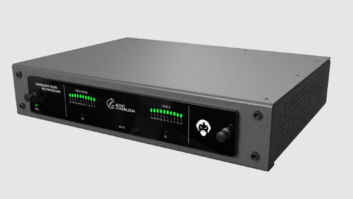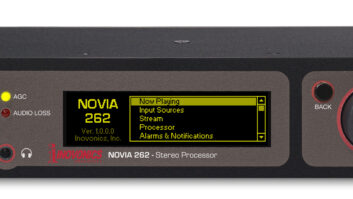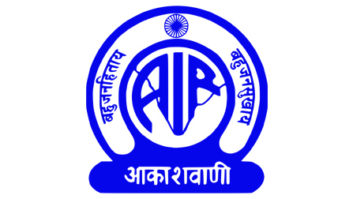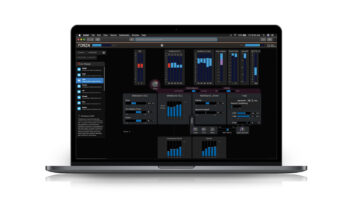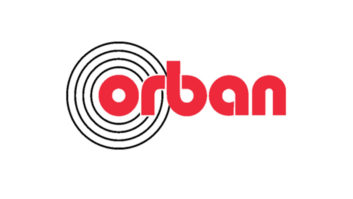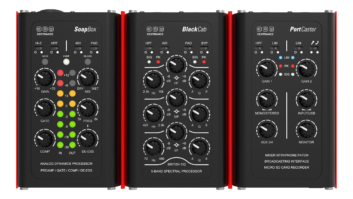This article is from a continuing education series published monthly by the Alabama Broadcasters Association Engineering Academy.
Do you know the answer to this question: What was the first audio processor ever used in broadcasting? Answer at the end of this article.
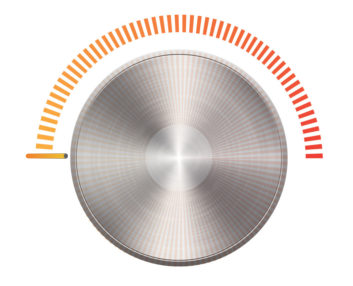
Audio processing originally was used to comply with FCC regulations concerning over-modulation. However, through the years, processing has been used more often to “tailor” a station’s sound over the air. While this is not necessarily bad, if it not done properly one can easily do more harm than good to the station sound and listener retention. We all remember the “loudness war” of a few years ago.
Here are a few thoughts and suggestions from audio professionals around the country covering proper adjustment of audio processors.
- Create a proper monitoring setup (room acoustics, speakers, placement, along with the ability to monitor on various types of speakers).
Frank Foti of The Telos Alliance says, “There should be a reference location that is used to monitor the station, and the performance of the processing system. While many in management choose the use of their cars, due to familiarity, these should be used as a secondary reference. The main location should be preferably at the station, use a quality monitor to capture a solid off-air signal, and it should be devoid of multipath. If possible, the tuner/monitor should be able to listen to competing and comparable signals, also without multipath.”
Remember that most listeners are not sitting in front of a theater sound system while listening to your station. It varies and includes car radios, laptop speakers, headphones and earbuds. While it is important to listen on a good speaker system when fine-tuning the processor, always have a way to listen on these other devices as well.
Don’t forget to check the audio in the mono mode. This will help check for any phasing issues. If your station is streaming over the Internet, it is a good idea to listen to how it sounds there as well. Normally you would have a different processor for the stream, so you may need to address that as well.
- Check your source material. Make sure everything coming into the processor is the best it can be. There is no processor that can correct bad source audio. As a matter of fact, in the digital audio domain, if you feed bad audio into the processor, it will often come out even worse!
Check all the sources that you will be using over the air (locally generated files, different studios, network feeds, etc.). Correct gain staging throughout your plant is critical.
Doug Irwin, writing in Radio magazine, stated: “While adjustments to an audio processor can give a station consistency along with some other characteristics that makes it sound recognizable, in the end, better results are achieved if effort is put into having each element that makes up the program content sound as consistent as possible, before they go into an over-the-air processor.”
Create standards for proper levels in the production room, and make sure the production department follows those correctly. “Quality, not quantity” should be the goal.
Most stations have now moved from and analog to digital. Digital operates differently than analog. It would be a good idea to have a training session on the proper operation of the digital audio workstation (DAW) so that personnel understand the basics of digital audio.
Bob Katz, noted mastering engineer, said: “The reason digital doesn’t sound as good as it should is that most operators have not taken the time to ‘look under the hood’ at how digital works. As a result, they make fundamental mistakes that will compound and make your project inferior.”
- Monitoring at a medium level. One needs to understand how the ear/brain operates and that it changes with different sound pressure levels (look at the Fletcher Munson curves). Also, it helps to listen at low levels, as the ear can decipher loudness differences between signals when listening at low to medium volume.
Talk with successful mixing engineers and they will all tell you that mixing at low levels allows you the hear how all the sounds blend together correctly. Too loud and the ear gets in the way.
- Take time to adjust. Don’t try to complete the adjustments in one day. Take rest for your ears, make small adjustments and save settings so you can A/B the changes.
A good practice is to listen for no longer than 20 minutes, then give your ears a rest. If listening for longer periods of time, the brain becomes desensitized, and the results can fool you into a belief that may not be actual.
Saving all your changes is important as it gives a way to determine if you are making improvements or going the wrong way by A/B comparisons.
It is most important to adjust correctly. Make small adjustment, one at a time. If you make too many adjustments at one time, you won’t know which one was good and which one was bad when you listen. Simply put, when fine-tuning the processor, make a single adjustment, then listen over a day on various sources. If it sounds better, you are going in the right direction; if not, you went the wrong way. Always A/B your adjustments!
- Try different presets (you may find another format that works best for your required sound). Just because a certain preset is listed as “Modern Country” doesn’t mean it can’t work for another format. It simply means this is an algorithm that seems to fit modern country based on listener tests. Experiment with different presets.
Modern processors have a lot of different things you can adjust, but just because you have them doesn’t mean you have to use them all. Most of the time, less is better. If the station sounds right, stop tinkering with the controls. Know when to stop.
- Listen to your station intently. Check for level balance, overall quality and intelligibility from all sources. Listeners should be able to hear every nuance and word being broadcast. Sometimes, poor mixing in the production room will create a file where the important part, the vocal, gets lost. A client didn’t buy a spot schedule for the background music or effects.
Andrew Scheps, a well-known mixing engineer, once said: “It’s what comes out of the speaker that counts.” This is true in mixing studios as well as broadcast operations.
The question always comes up: Who should make the final decision as to how the station should sound? First, it should not be a committee — you will never satisfy everybody. Most engineers agree it is the program director and the chief engineer.
Frank Giardina, Cumulus chief engineer in Birmingham, said, “I usually meet with them and see what they are hearing and want to hear. Usually, I will have to translate their terminology. They will use terms such as sparkle, boom, mushy, jump out, etc. I will ask them to give me examples of songs, voices and stations that sound good and ones that sound bad.”
He added, “We will usually start with the factory presets. The ones on new processors are really good and provide a starting point. Once we start adjusting, I insist that we listen to the new adjustments for at least three or four days (unless it sounds terrible, at which point we go back to the starting point immediately). I also ask that they listen on various radios, and I will do the same. We will then get back together and see where things stand.”
An audio processor that has been set up correctly will do wonders for your station, but one that is set up wrong can be a negative in the station’s performance.
And the answer to the question, “What was the first processor ever used in a broadcast operation?” It was the audio engineer, sitting in front of the console … turning the level up when was to low and tuning it down when it was too loud.
Our thanks for their input to Frank Foti, Frank Giardina, Doug Irwin, Bob Katz, Bob Orban and Andrew Scheps.
Larry Wilkins, CPBE, is director of the ABA Engineering Academy in Birmingham, Ala., and was the 2017–18 recipient of the Radio World Excellence in Engineering Award.





